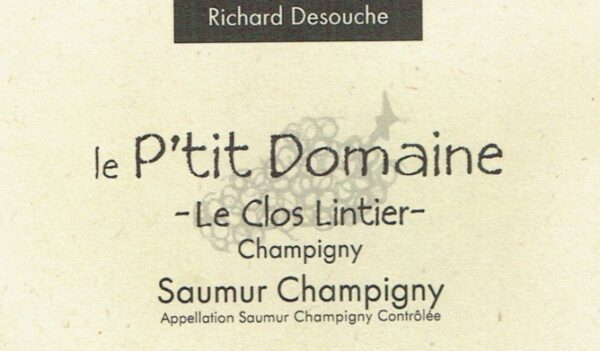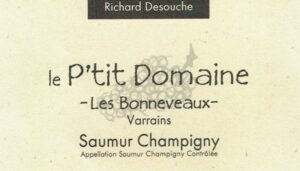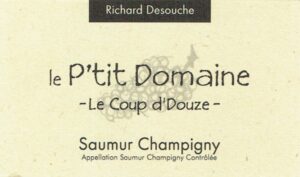
Saumur Champigny – Le Clos Lintier
$1.00
| Country | France |
|---|---|
| Region | Loire |
| Producer | le P'tit Domaine |
| Size | 750mL |
| Style | Red |
| Practices | Certified Organic |
| Grapes | Cabernet Franc |
From Desouche’s oldest vines, this is the third vintage of this wine, which he raises in fine-grained, new oak barrels.
Clos Lintier is a 1.7ha vineyard planted on shallow sandy soil with a very close underlying limestone bedrock. It has an upper section with very old vines, over a hundred years old, which have been used to produce this cuvée – just 1 barrel in 2016 and 2017!
The rest of the parcel is planted with younger vines (40 to 50 years old) that were in a fairly poor state. With the help of a local nurseryman, Desouche wants to quickly clone the ones that need to be replaced before uprooting them and reintroducing them identically when replanting, therefore preserving the genetic diversity.
About the Producer
Richard Desouche, the vineyard manager for the famed Clos Rougeard (where he made his first wines), is gaining a reputation for his own great Saumur wines. From just 4.5 hectares of organically farmed vineyards, Desouche crafts tiny quantities of a few different cuvées, vinified very gently; what he calls “infusion.” Desouche searches for the essence of fruit from his very old vines (some 100 years old), not high concentration.
Richard Desouche arrived in Saumur in 1990, animated by a passion for wine. In 2006, he bought the first hectare of vines for his P'tit Domaine. The vineyard spreads over 4 areas:
- Bois Blanc (clay-limestone soil) and Les Bonnevaux (similar to the famous Poyeux vineyard: same slope, same orientation and identical soil, very siliceous clay-limestone, with a limestone base) in Varrains
- Entre deux Voyes, in Dampierre - clay-limestone and gravel soils
- Le Clos Lintier, in Champigny - shallow sandy soil with a very similar underlying limestone bedrock.
- Lumois
On his plots, the vines are planted 1.7 to 1.8 metres apart, with a small hectare at 2 metres. Richard believes that the ideal spacing is 1.85 metres. The vines are pruned using the Guyot simple or Val de Loire method - supposed to be less traumatic for the vines: it improves the sap flow and therefore limits the occurrence of wood diseases.
Farming practices: Certified organic since 2013
related products
-
le P'tit Domaine
Saumur Champigny – Bonneveaux
-
le P'tit Domaine
Saumur Champigny – le Coup d’Douze


